A small, warm moment on a cold December day
1. Tired, Hungry, and Ready for Dumplings
It was a regular December lunch break at the FHNW Food Culture Lab, grey skies outside, quiet fatigue inside, and the familiar buzz of studio work still lingering in the air.
But that day was different.
Maika and I had prepared the dumpling filling the day before, knowing we’d be making Korean dumpling mandu together during Jour Fixe. We wanted to do something with our hands, to interrupt the rhythm of screens, and to invite others into something warm and tactile.
And it worked. what followed was a quiet, cozy moment where conversation, cooking, and care all came together around a shared table.
2. Prepping the Filling
The day before, Maika and I went to the Food Culture Lab and prepared a vegan dumpling filling — soft, savory, and simple. Here’s what we used (roughly, with small portion):
- 200g firm tofu (pressed and crumbled)
- 2 shiitake mushrooms, finely chopped
- 1 big bunch scallions, minced
- 0.5 tbsp sea salt
- 1 tsp soy sauce
- 2 tbsp toasted sesame seeds, ground
- 2 tsp sesame oil
We brought the filling to the Jour Fixe lunch table, and slowly people gathered around to start folding.
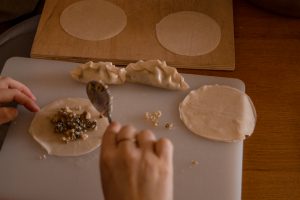
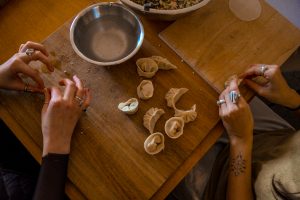

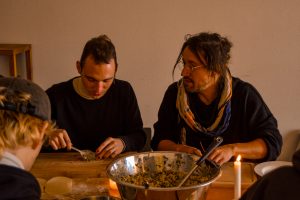
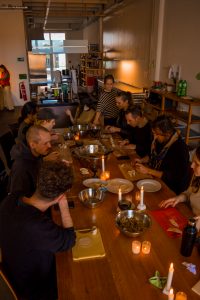
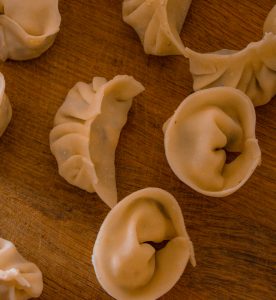
3. Shapes, Stories, and Gyoza Questions
Luca, Maika, and I started wrapping first, then others joined in.
Everyone had their own style — some crescent-shaped, some like triangles, some… very abstract.
Of course, someone asked, “Are these like Japanese gyoza?”
That question comes up often, and it says more than it seems.
For many in Europe, “Asian dumplings” are almost synonymous with gyoza — a version that has been widely globalized, branded, and made familiar through Japanese food’s long-standing cultural presence in the West.
But dumplings exist across Asia and beyond — from Korean mandu to Georgian khinkali to Turkish manti — each carrying their own histories, rituals, and meanings.
So I paused. Why is it that gyoza needs no explanation, while other dumplings require footnotes or cultural disclaimers?
It reminded me how food visibility isn’t neutral — it’s shaped by power, marketing, and cultural politics.
We didn’t dwell too long on it, but the question stayed with me.
4. Making It Work, Together
Somewhere halfway through folding, we realized we were out of dumpling wrappers.
It could’ve been the end of the session. but it wasn’t.
Valentin quietly started mixing flour and water, kneading dough by hand, and rolling out fresh wrappers one by one.
The whole thing felt very on-brand for the Food Culture Lab: improvisational, open-ended, and grounded in doing.
No complaints, no panic. just flour-covered hands and an easy rhythm. We kept going.

5. Who Cooks, Who Eats? Everyone!
We made dumplings and ate them as we went — not because we were rushed, but because that’s simply how it works in my family.
Dumplings aren’t something you prepare in silence and serve all at once. They’re made and eaten in the same flow: folding, boiling, chatting, tasting, folding again.
It’s a rhythm I grew up with — making food together, eating together, no fixed roles, no division between cook and guest. That spirit came through clearly here too.
At the end, when people had to run off to meetings and tasks, Maddie and Johannes quietly stayed behind to finish the cleaning. That act of care, small and unnoticed by most, felt like the softest, kindest ending to it all.
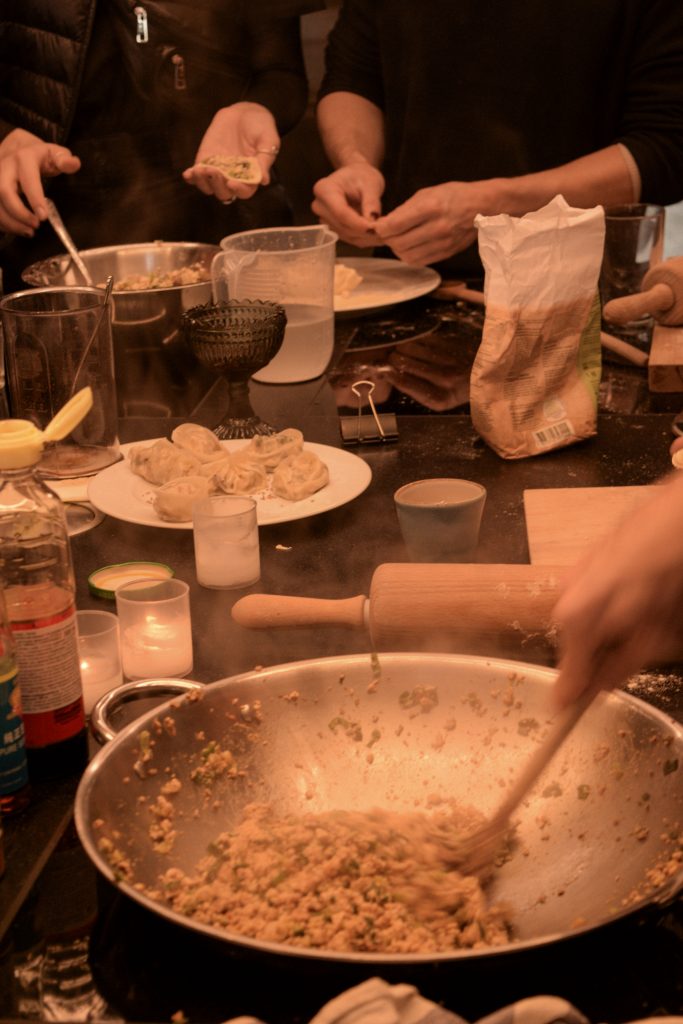
6. A Bite of Home, Away from Home
The day was planned, but it wasn’t about perfection.
There was no polished performance. just a simple gathering in the middle of a busy school day.
Making dumplings — folding them, chatting, improvising, eating together — grounded me in a way I hadn’t expected.
In that moment, the kitchen became more than just a place to cook. it felt like home.
Each bite carried a piece of comfort and belonging, a reminder that even far away, we can find connection through shared food.
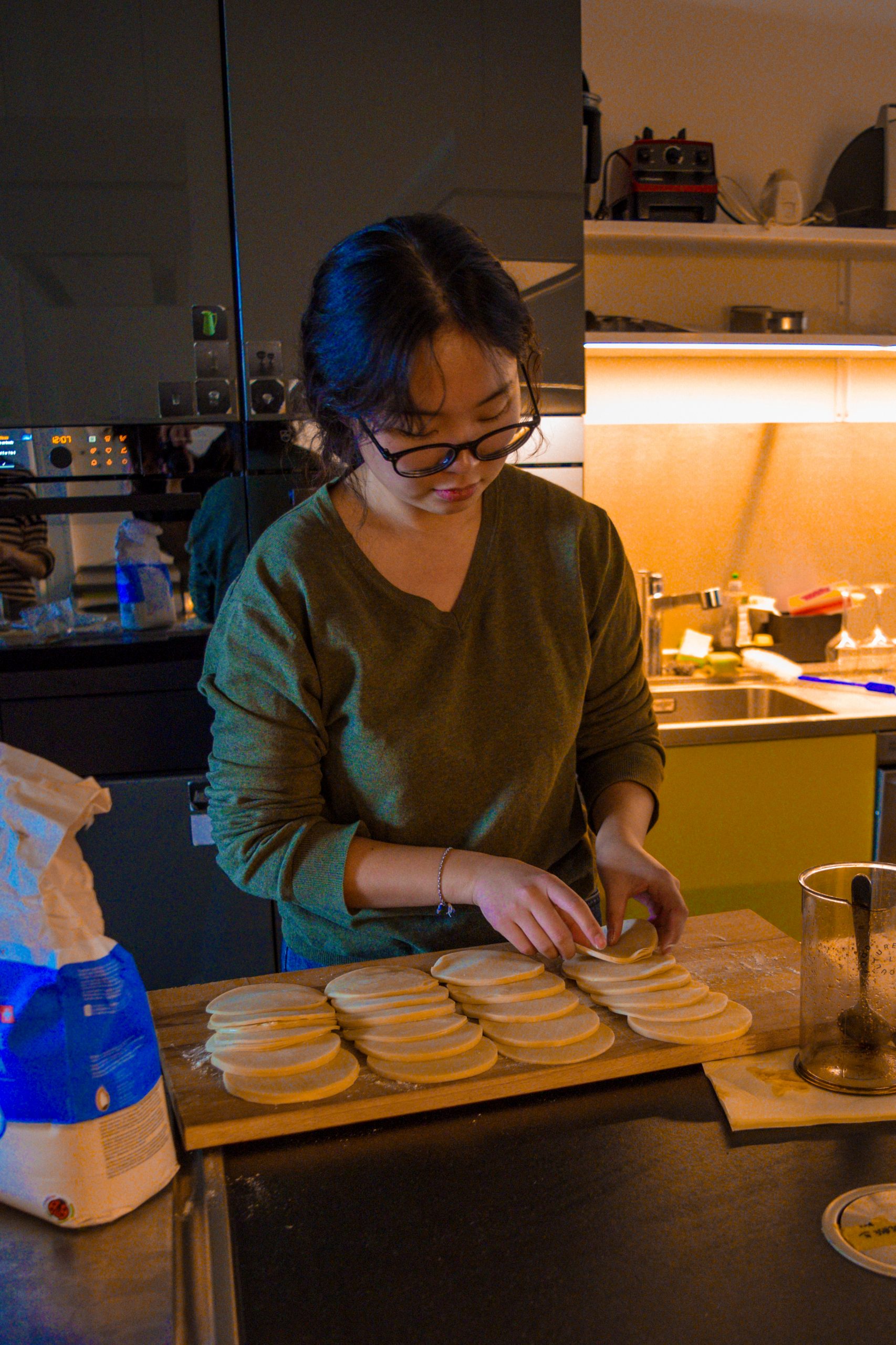
Leave a Reply